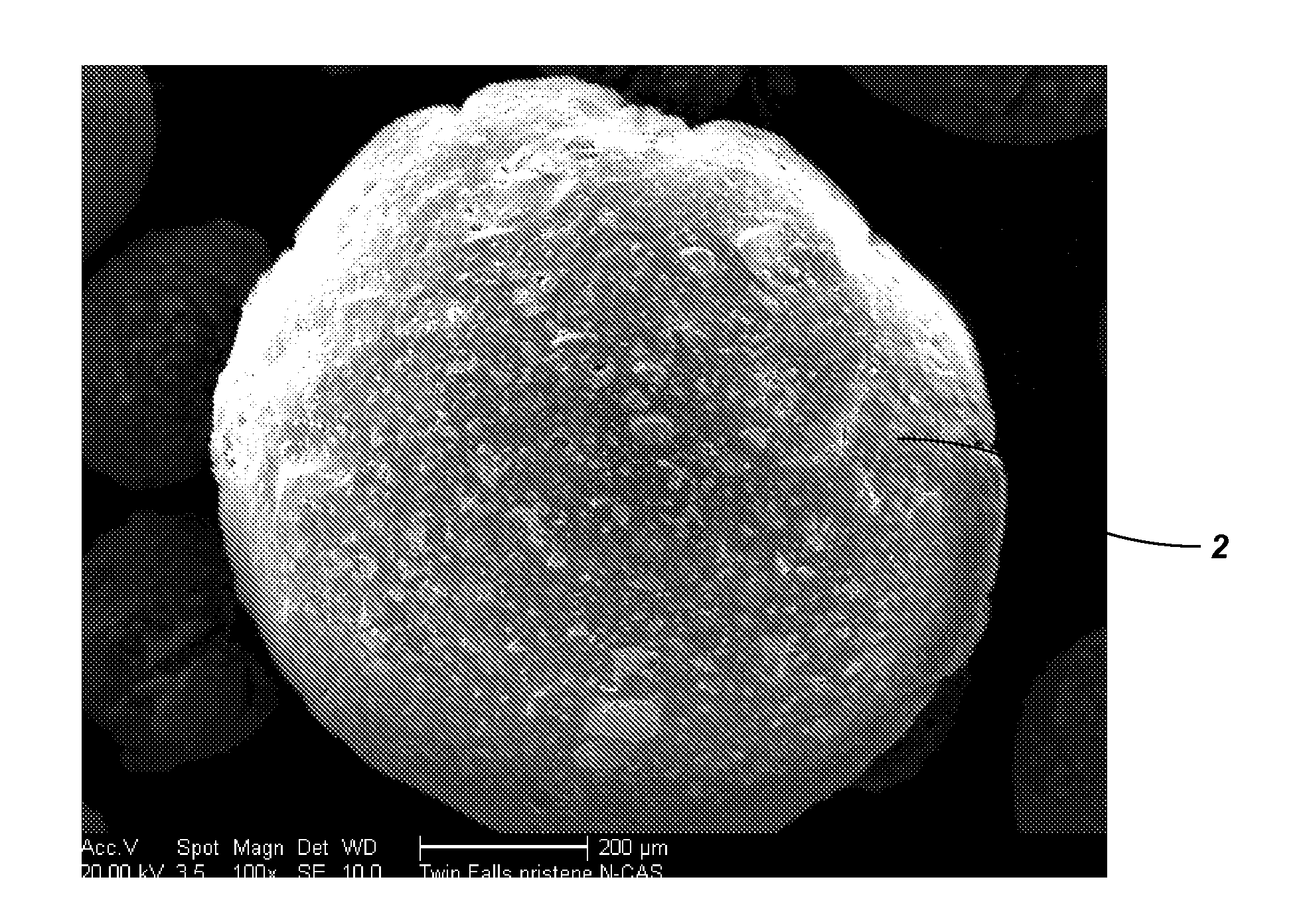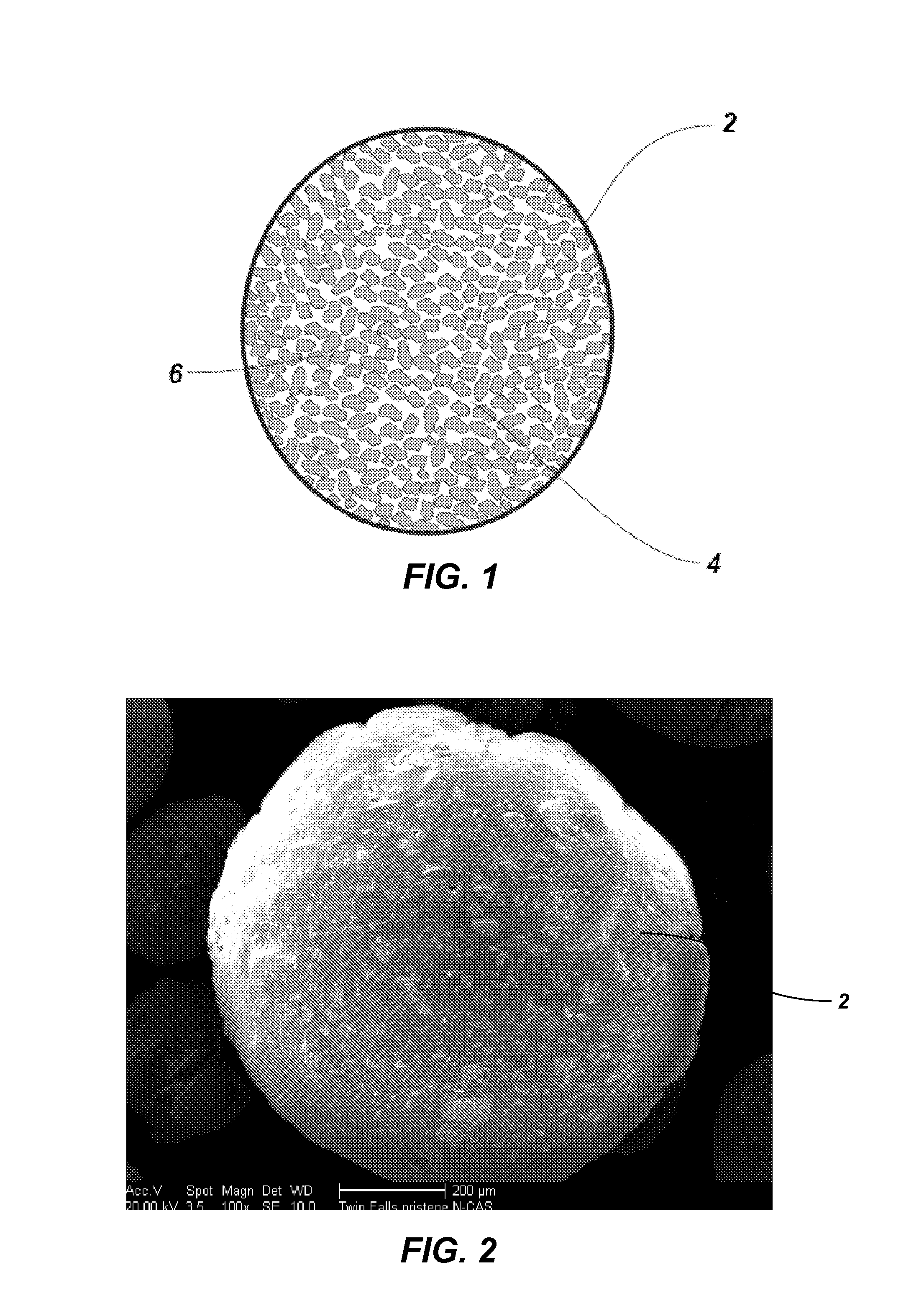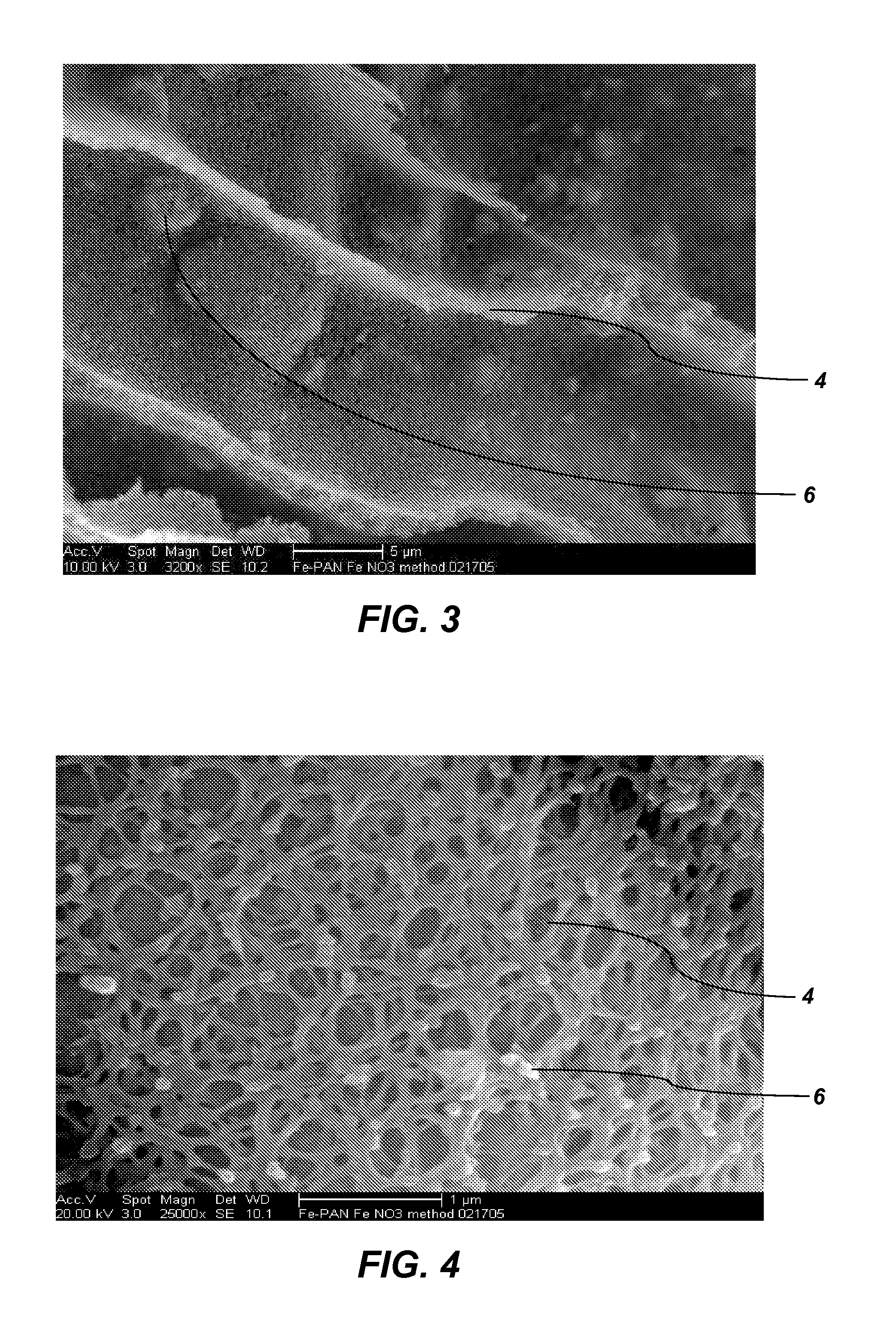Methods of producing metal oxides, a method of producing adsorption media including the same, and a precursor of an active component including the metal oxide
- Summary
- Abstract
- Description
- Claims
- Application Information
AI Technical Summary
Benefits of technology
Problems solved by technology
Method used
Image
Examples
example 1
Preparation of HIO Using DMSO as a Reaction Solvent
[0051]HIO particles were prepared using DMSO as a reaction solvent. Iron(III) chloride hexahydrate (Fe3Cl3.6H2O) (45 g) was dissolved with stirring in concentrated DMSO (120 ml) by heating the DMSO to approximately 60° C. Air was bubbled through the solution using a gas dispersion tube (glass tube with fitted glass tip) to convert the iron(III) chloride hexahydrate to HIO. With constant stirring, concentrated sodium hydroxide (16.59 M) was added dropwise to titrate the HIO / DMSO solution to a pH of from approximately 6.5 to less than approximately 7.0. The sodium hydroxide was prepared by dissolving pellets of sodium hydroxide in water. The reaction of the iron(III) chloride hexahydrate with oxygen from the air formed a viscous dark brown precipitate, which was collected by filtration and identified as HIO. The water content of the filtered HIO was approximately 46%. Since aqueous sodium hydroxide was used, the filtered HIO included ...
example 2
Preparation of HIO Using Methanol as a Reaction Solvent
[0052]HIO particles were prepared in a manner similar to that described in Example 1 except methanol was used as the reaction solvent and potassium hydroxide was used instead of sodium hydroxide. Iron(III) chloride hexahydrate (Fe3Cl3.6H2O) (40 g) was dissolved in methanol (100 ml) with stirring. Air was bubbled through the iron(III) chloride hexahydrate / methanol solution using a gas dispersion tube (glass tube with fitted glass tip) to convert the iron(III) chloride hexahydrate to HIO. With constant stirring, potassium hydroxide (6.7 M) was added dropwise to titrate the HIO / methanol solution to a pH of from approximately 6.5 to less than approximately 7.0. The potassium hydroxide was prepared by dissolving pellets of potassium hydroxide in methanol. The reaction of the iron(III) chloride hexahydrate with oxygen from the air formed a viscous dark brown precipitate. No liquid was visible. The precipitate was allowed to air dry in...
example 3
Preparation of HIO-PAN Beads
[0053]The HIO particles produced as described in Example 2 were formed into beads. The HIO particles (60 g) including unwashed salts (approximately 18 g Fe5OH8) were ground into a powder having a particle size of less than approximately 150 μm and combined with PAN fibers (3.68 g) and concentrated DMSO (60 ml) to produce a PAN-HIO suspension. The PAN-HIO suspension was heated to a temperature of approximately 90° C. until no visible fibers remained. Once the PAN fibers were dissolved, constant stirring or mixing with slight heat (approximately 40° C.) maintained a fine suspension of the HIO in the PAN-HIO solution. Solid beads were formed by spraying the PAN-HIO suspension through an air / nozzle device into a stirred quenching bath that included deionized water. The droplets of PAN-HIO suspension solidified into beads upon contacting the deionized water. Thus, the volume of deionized water in the quenching back should be of sufficient size to dilute the DM...
PUM
| Property | Measurement | Unit |
|---|---|---|
| Fraction | aaaaa | aaaaa |
Abstract
Description
Claims
Application Information
 Login to View More
Login to View More - R&D
- Intellectual Property
- Life Sciences
- Materials
- Tech Scout
- Unparalleled Data Quality
- Higher Quality Content
- 60% Fewer Hallucinations
Browse by: Latest US Patents, China's latest patents, Technical Efficacy Thesaurus, Application Domain, Technology Topic, Popular Technical Reports.
© 2025 PatSnap. All rights reserved.Legal|Privacy policy|Modern Slavery Act Transparency Statement|Sitemap|About US| Contact US: help@patsnap.com



